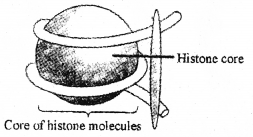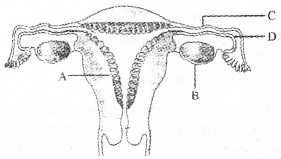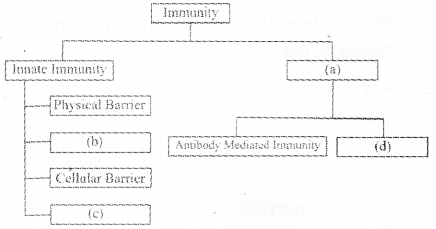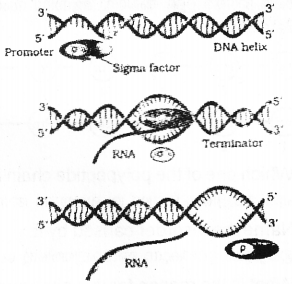Kerala Plus Two Zoology Previous Year Question Paper March 2019 with Answers
| Board | SCERT |
| Class | Plus Two |
| Subject | Zoology |
| Category | Plus Two Previous Year Question Papers |
Time: 1 Hour
Cool off time : 10 Minutes
Maximum : 30 Score
General Instructions to Candidates :
- There is a ‘cool off time’ of 10 minutes each for Botany and Zoology in addition to the writing time of 1 hour each. Further, there is ‘5 minutes’ ‘Preparatory Time’ at the end of the Botany Examination and before the commencement of Zoology Examination.
- You are not allowed to write your answers nor to discuss anything with others during the ‘cool off time’ and ‘Preparatory time’.
- Use the ‘cool off time’ to get familiar with the questions and to plan your answers.
- Read questions carefully before answering.
- All questions are compulsory and the only internal choice is allowed.
- When you select a question, all the sub-questions must be answered from the same question itself.
- Calculations, figures, and graphs should be shown in the answer sheet itself.
- Malayalam version of the questions is also provided.
- Give equations wherever necessary.
- Electronic devices except non-programmable calculators are not allowed in the Examination Hall.
Answer all questions from 1 to 3. Each carries 1 score. (3 × 1 = 3)
Question 1.
Which among the following belongs to ex-situ conservation?
Wildlife sanctuaries, Biosphere reserves, Zoological parks, National parks, Sacred groves
Answer:
Zoological park
Question 2.
The milk produced during the initial few days of lactation is called …………
Answer:
Colostrum
Question 3.
Diagrammatic representation of the central dogma given below is not correct. Make necessary corrections and redraw it:

Answer:

Answer any 9 questions from 4 to 14. Each carries 2 scores. (9 × 2 = 18)
Question 4.
Prepare a flow chart showing the evolution of modem man in the hierarchical order of their evolution using the details given below:
Homo erectus, Homo habilis, Dryopithecus, Australopithecines, Homo sapiens, Ramapithecus, Neanderthal man
Answer:
Dryopitheus Ramapithecus → Australopithecus → Homo habilus → Homo erectus → Neanderthal man →
Homo sapiens.
Question 5.
Observe the figure given below:

a) Identify the figure
b) How many histone molecules are present in the Histone core?
c) Distinguish Euchromatin and Heterochromatin
Answer:
a) Nucleosome
b) 8
c) euchromatin – Region of loosely packed chromatin Heterochromatin – Region of tightly packed chromatin.
Question 6.
Some examples of evolutionary structures are given below. Classify them under suitable heading:
a) Forelimb of Man, Cheetah, Whale, Bat
b) Wings of Butterfly, Bird
c) Thorns and tendrils of Bougainvillea and Cucurbita
d) Vertebrate hearts or brains
e) Eye of the Octopus and Mammals
f) Flippers of Penguins and Dolphins
Answer:
Homologous organs:
a) Forelimb of Man, Cheetah, Whale, Bat.
d) Vertebrate hearts or brains.
c) Thorns and tendrils of Bougainvillea and cucurbita.
Analogous organs:
e) Eye of the octopus and mammals.
f) Flippers of penguins and dolphins.
b) Wings of butterfly, bird
Question 7.
“The sex of the baby is determined by the father and not by the mother.” Do you agree with this statement? Substantiate your answer.
Answer:
yes.
In case the ovum fertilises with a sperm carrying X chromosome the zygote develops into a female (XX) and with Y-chromosome results into a male offspring. Thus the genetic makeup of the sperm that determines the sex of the child.
Question 8.
Find the odd one out. Justify your answer.
Down’s syndrome. Turner’s syndrome, Phenylketonuria, Klinefelter’s syndrome.
Answer:
Phenylketonuria, it is the mendelian disorder or metabolic disorder.
Question 9.
Observe the diagram given below showing the sectional view of the female reproductive system and name the parts labelled ‘A’, ‘B’, ‘C’ & ‘D’.

Answer:
A – endometrium
B – ovary
C – isthmus
D – ampulla
Question 10.
Microbes are useful to human beings in diverse ways. If so, name the following:
a) Microbe known as ‘‘Baker’s Yeast”.
b) Lactic acid producing bacterium.
c) Fungus which helps in the production of bio-active molecule – cyclosporine A.
d) Symbiotic nitrogen fixing bacterium.
Answer:
A – Saccharomyces
B – Lactobacillus
C – Trichoderma
D – rhizobium
Question 11.
Complete the flow chart given below:

Answer:
A – aquired immunity
B – Physiological barrier
C – Cytokine barrier
D – Cell mediated immunity
Question 12.
A wide range of contraceptive methods are presently available. If so,
a) Name one contraceptive method having least side effect.
b) Which contraceptive method is generally adviced for females as a termination method to prevent any more pregnancies?
c) List out any two possible ill-effects of the usage of contraceptive methods.
Answer:
a) Natural method
b) Tubectomy
c) Irregular menstrual bleeding and Breast cancer
Question 13.
The causes of biodiversity loss are designated as “EVIL QUARTET”. Explain the Evil Quartet in biodiversity loss.
Answer:
- Habitat loss and fragmentation:
- Over-exploitation
- Alien species invasions
- Co-extinctions
Question 14.
List of some diseases commonly occurring in man are given below. Arrange them based on causative organism in the table.
Malaria, Common cold, Filariasis, Typhoid, Ascariasis, Ringworms, Amoebiadid, Pneumonia
| Bacteria | Fungus | Virus | protozoans |
Answer:
| Bacteria | Fungus | Virus | protozoans |
| Typhoid | Ringworm | Common cold | amoebiasis |
| Pneumonia | malaria |
Answer any 3 questions from 15 to 18. Each carries 3 scores. (3 × 3 = 9)
Question 15.
The amino acid composition of the relevant portion of β chain of two hemoglobin molecules (A & B) are shown below:

a) Which one of the polypeptide chain is abnormal?
b) Name the disorder caused by it.
c) What is the reason for this abnormality?
d) What is the effect of this abnormality in such individuals?
Answer:
a) B
b) Sickle cell anemia
c) Substitution of glutamic acid by valine.
d) The mutant hemoglobin molecule under low oxygen tension causing the change in the shape of the RBC from biconcave disc to elongated sickle like structure.
Question 16.
The diagrammatic representation of the DNA fingerprint from a crime scene and that of a suspected persons are given below:

a) What is your conclusion about the suspects based on DNA Fingerprint given?
b) What is VNTR?
c) Who developed this technique first?
Answer:
a) The DNA finger print of suspect II matches with DNA from the crime scene. So suspect II is identified as culprit.
b) variable number tandem repeats
c) Alec Jeffreys
Question 17.
a) Expand STDs.
b) Cite any two examples for STD.
c) Suggest any two methods for the prevention of STDs.
Answer:
a) sexually transmitted disease
b) Gonorrhoea, syphilis, genital herpes, chlamydiasis.
c) Avoid sex with unknown partners/multiple partners.
Question 18.
The diagrammatic representation of a process in bacteria is given below:

a) Identify the process.
b) Name the enzyme involved in this process.
c) Explain the three major steps in this process.
Answer:
a) Transcription
b) DNA dependent RNA polymerase
c) Initiation:
RNA polymerase binds to promoter and initiates transcription (Initiation).
Elongation:
It uses nucleoside triphosphates as substrate and polymerises in a template.
Termination:
Once the polymerases reaches the terminator region, the nascent RNA and RNA polymerase falls off. This results in termination of transcription.
